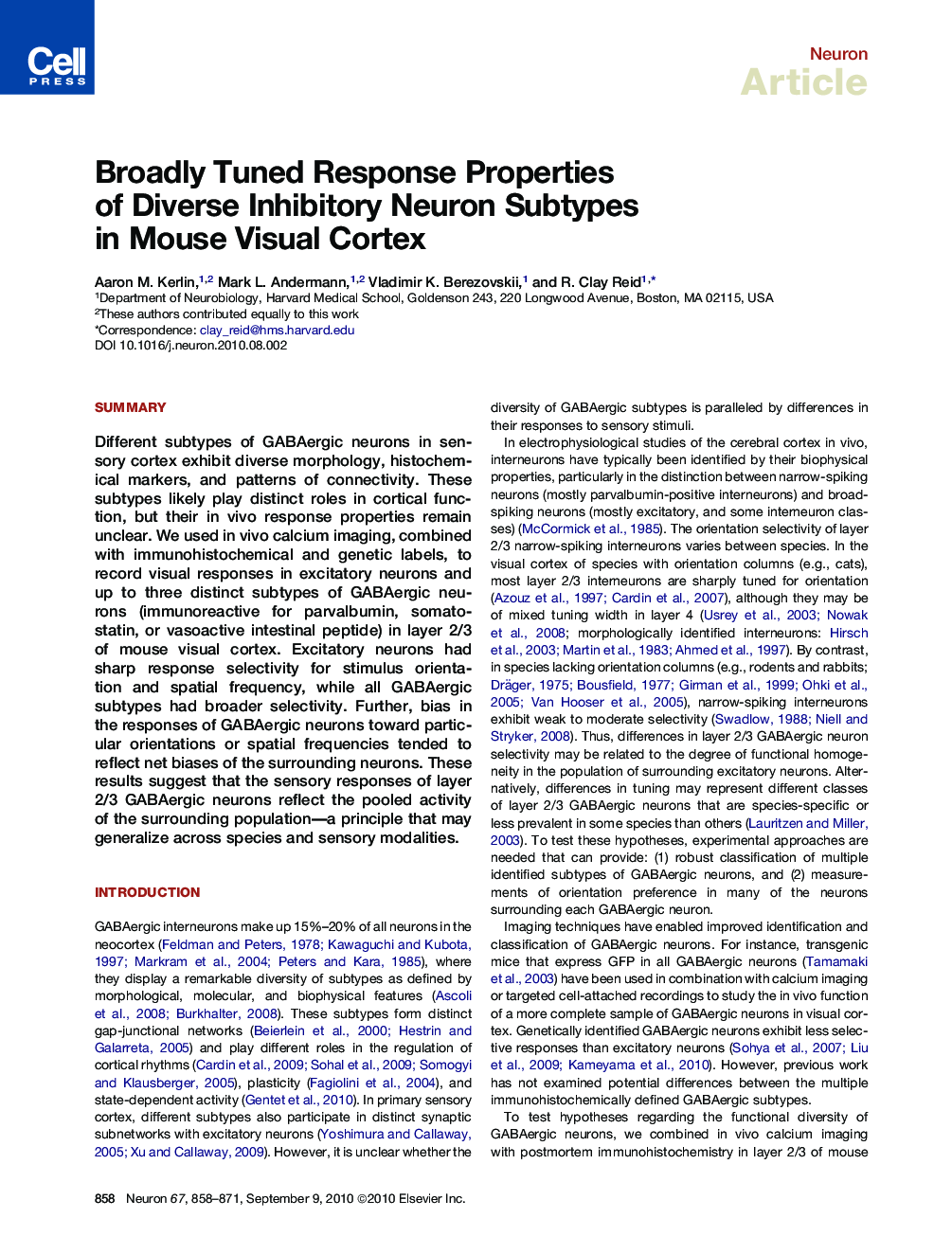| Article ID | Journal | Published Year | Pages | File Type |
|---|---|---|---|---|
| 4321924 | Neuron | 2010 | 14 Pages |
SummaryDifferent subtypes of GABAergic neurons in sensory cortex exhibit diverse morphology, histochemical markers, and patterns of connectivity. These subtypes likely play distinct roles in cortical function, but their in vivo response properties remain unclear. We used in vivo calcium imaging, combined with immunohistochemical and genetic labels, to record visual responses in excitatory neurons and up to three distinct subtypes of GABAergic neurons (immunoreactive for parvalbumin, somatostatin, or vasoactive intestinal peptide) in layer 2/3 of mouse visual cortex. Excitatory neurons had sharp response selectivity for stimulus orientation and spatial frequency, while all GABAergic subtypes had broader selectivity. Further, bias in the responses of GABAergic neurons toward particular orientations or spatial frequencies tended to reflect net biases of the surrounding neurons. These results suggest that the sensory responses of layer 2/3 GABAergic neurons reflect the pooled activity of the surrounding population—a principle that may generalize across species and sensory modalities.
► 3D imaging of visual responses in vivo combined with triple immunostaining ex vivo ► Multiple GABAergic subtypes show broad tuning for orientation and spatial frequency ► Stimulus preference of GABAergic neurons reflects the surrounding population average
